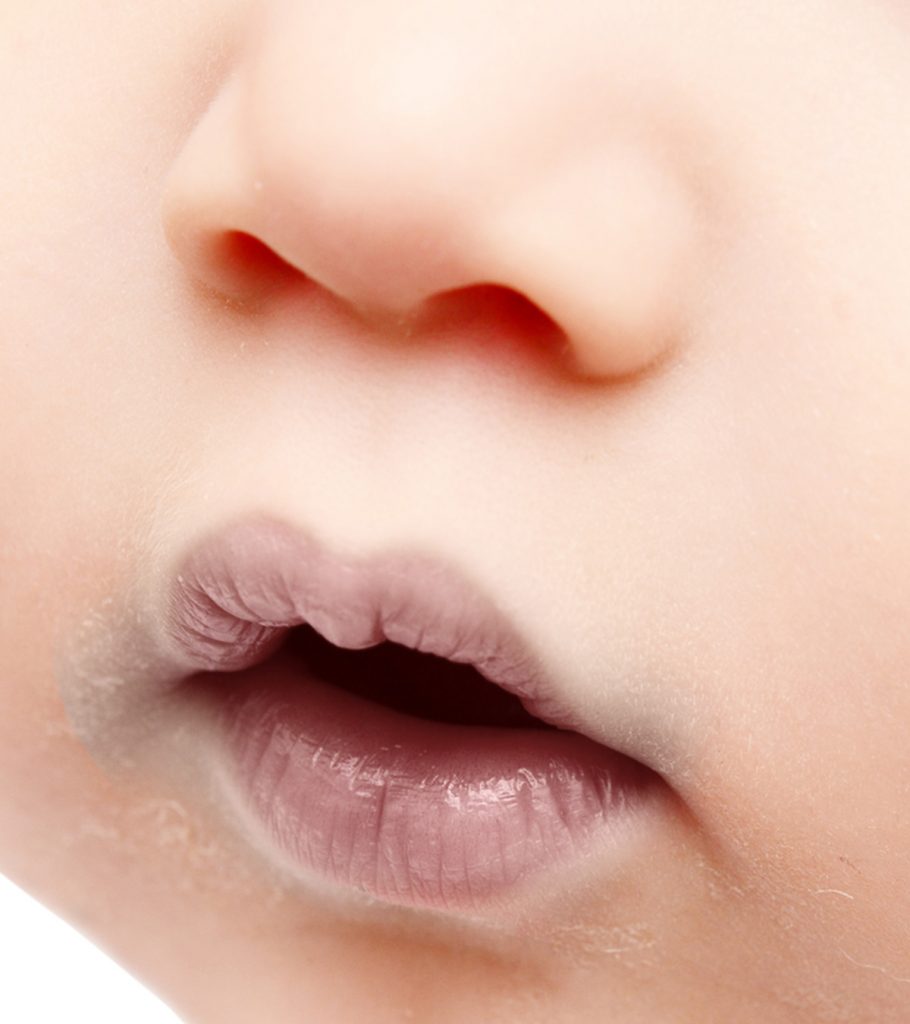Circumoral cyanosis is a type of cyanosis that occurs when there is discoloration around the mouth. Here, the term “cyanosis” describes a bluish discoloration or tint in the skin caused by various conditions related to blood circulation and reduced oxygen levels in the bloodstream.
Cyanosis affects different body parts, including the nails, fingers, earlobes, and mouth or mucous membranes (1), and can be divided into distinct categories depending on the discolored body parts.
Read on to know more about circumoral cyanosis in babies, including its symptoms, causes, diagnosis, and treatment options.
What Is Circumoral Cyanosis?
Circumoral cyanosis is defined as the blue-gray discoloration around the mouth, especially the upper lip area. It is the most common type of cyanosis in babies and children. With dark skin, the tint may also appear gray or white (2).
Although the condition can be worrisome for parents, you may check a few things to rule out a medical emergency.
Main Categories Of Cyanosis
Let us now discuss the two main types of cyanosis (1) (3).
- Central cyanosis: It occurs in the central part of the body, including the mouth, torso, and head. In newborns, this condition is not considered normal and is usually associated with low oxygen levels in the blood. Central cyanosis can also occur due to a problem in the heart, lungs, or blood.
- Peripheral cyanosis: It occurs in the extremities, including toes, fingertips, and hands. It can also occur in the circumoral area. This type of cyanosis is usually not life-threatening, but understanding the cause can help prevent further complications.
What Causes Circumoral Cyanosis In Babies?
Circumoral cyanosis is usually considered a type of acrocyanosis, which is common in babies as long as it doesn’t affect the central parts of the body (1). In some cases, children may develop acrocyanosis after a swim or bath in cold water. However, it resolves as soon as the body is warmed up.
However, in some cases, the condition does not go away even after warming up and may be due to underlying heart or lung problems, such as Tetralogy of Fallot, a type of congenital heart disease (4).
Cyanosis may also occur when the lungs do not properly oxygenate the blood or the body is not receiving enough oxygenated blood. It most commonly occurs (5):
- If the baby is crying incessantly and strongly
- Immediately after feeding, bowel movement, or waking up
- If the baby is dehydrated
- If there has been smoke inhalation
- If there is a foreign body obstructing the airway (choking) or suffocation (asphyxia)
According to a case report published in the American Academy of Pediatrics (AAP) publications, perioral cyanosis without signs of respiratory distress was seen in a baby with COVID-19 infection (6). Coexisting signs and tests may help diagnose the exact causes of cyanosis around the mouth in babies.
Signs And Symptoms Of Circumoral Cyanosis In Infants
Babies with circumoral cyanosis will have blue discoloration around their mouth. According to the Boston Children’s Hospital, blue discoloration around the mouth and face, earlobes, and fingernails are the common symptoms of cyanosis in babies (7).
You may also look out for the associated signs and symptoms in babies (8):
- Respiratory issues – difficulty breathing, fast breathing, chest indrawing
- Sweating
- Fainting
- Discomfort
- Fever
When To See A Doctor?
If the cyanosis is visible on the lips, tongue, head, or torso, it is central cyanosis and should be immediately checked by the doctor (1).
Additionally, talk to your pediatrician or cardiologist
- If your baby has experienced cyanosis for the first time
- If the frequency of cyanosis increases, it may be due to a heart condition
- If the cyanosis condition lasted for more than one minute
How Is Circumoral Cyanosis Diagnosed?
The three primary steps that your doctor may perform to diagnose circumoral cyanosis may include (1):
- Medical history of the baby
- Physical examination
- Oxygen saturation level to determine whether the oxygen levels are low or normal
Depending on the above findings, the doctor may recommend further confirmatory tests or evaluation. Also, the urgency of the condition may warrant consultation with a heart or lung specialist or a visit to the emergency room.
How Can Circumoral Cyanosis Be Treated?
In most cases, if the cyanosis is due to acrocyanosis, babies may not require any treatment. However, if there is an underlying heart or lung problem, the treatment may depend on the condition (1).
Circumoral cyanosis is evident by blue or gray discoloration around a baby’s mouth. It is considered a type of acrocyanosis caused by oxygen deprivation. In newborns, the condition usually resolves once circulation is established. Blue coloration around the mouth is not serious if it is not on the lips. It may fade once the baby is warmed up. However, seek immediate medical attention if you notice warning signs such as fainting, difficulty breathing, excessive sweating, and a bluish appearance around the head, torso, and tongue.
Key Pointers
- Circumoral cyanosis refers to the blue or grayish discoloration around a baby’s mouth.
- Respiratory issues, pain, and fever are common signs of circumoral cyanosis.
- Spreading discoloration to the tongue, cheeks and other parts is a cause for concern.
- In most cases, this condition resolves unless there is an underlying condition present.














